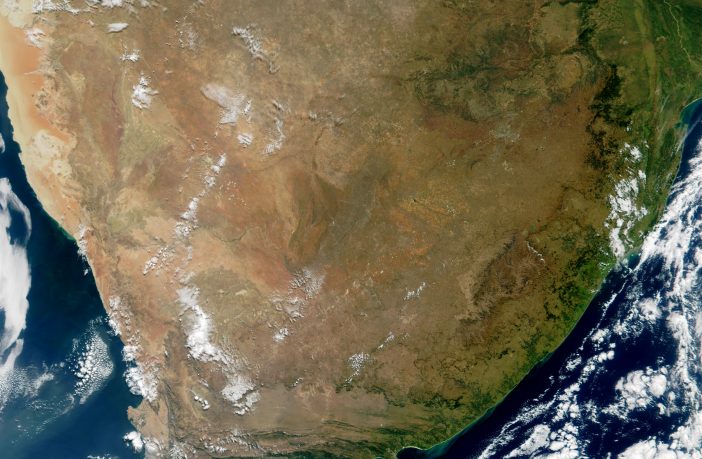Opinion
The South African government’s defence of coal-fired power is becoming increasingly challenging. Of all the fossil fuels, coal is the dirtiest in terms of air pollution and carbon emissions. Eskom’s reliance on a fleet of ageing coal-fired power stations makes them the country’s biggest polluter.
Last year Eskom released a staggering 205 Megatons of carbon emissions into the atmosphere. The area around Witbank in Mpumalanga, where Eskom has a high concentration of coal-fired power stations; boast the highest density of carbon emissions in the world and the worlds dirtiest air.
Apart from the obvious dangers of carbon emissions, one also needs to consider the associated health and environmental costs plus the costs to local communities in the form of reduced tourism and property values.
If the politicians and labour union leaders were truly honest with themselves, they would acknowledge that a coal-fired country is not in the best interest of the people and certainly not sustainable. The noose is closing in. The World Bank, along with local and global commercial banks simply will not finance any coal related projects. Read Coal Projects, The Smart Money is Jumping Ship
Extreme weather events are now a common occurrence. At the beginning of the year, the State of Victoria in Australia found its energy grid ‘not fit for purpose’ in a climate increasingly prone to extreme heat. More than 200,000 people had their power cut when Melbourne’s temperature hit 42 degrees. The generation failure came from ageing coal and gas generators underlining the urgent need to shift to renewables. Read more
The key challenge is no longer cost. Wind and solar technologies are now accepted as the cheapest energy production in the world with the value add of zero carbon emissions costs. The challenge is job preservation in the transition out of coal. The coal mining industry accounts for 81 000 direct jobs, and an estimated 170 000 indirect jobs. Eskom employs roughly 47000 people, a third of which is in coal-fired generation.
While the concerns of labour unions NUM and NUMSA are justifiable, we have no choice; we have to shift from our current high-carbon energy system to a future low-carbon electricity system.
We have an abundance of natural resources; gas, sunshine and wind which can be used to generate power with an inclusive advantage of jobs transfer from the coal industry. The secondary and third tier industrial development associated with renewables can replace coal sector industries in order to meet the countries investment and development goals. Jobs do not necessarily have to be lost; instead more jobs can be created over a wider geographical reach.
Evidence from UCT’s 2015 ERC research indicates that the electricity system will be the easiest part of our economy to decarbonise, followed by other sectors such as transport and the industrial sector. China, India, Germany and other major developing countries are investing heavily in renewable energy, as well as in other low-carbon technologies.
One almost gets the impression that our Energy Minister, the Eskom Board plus the leaders of labour unions NUM and NUMSA do not believe in climate change and the associated timelines associated with its social- economic impact. They continue to dig in their heels with the rhetoric ‘coal is here to stay’. The truth is there will not be any jobs for anyone if we continue to emit carbon emissions at the current levels.
Perhaps a quick read of ‘The Uninhabitable Earth’ by David Wallace-Wells may do the trick. The effects of climate change are, as he puts it in the book’s first line, ‘worse, and much worse than you think.’
Coal-fired energy production on nearly all accounts is on its last legs. Globally and locally there is a trove of reports that reveal just how much public opinion has swung in favour of renewables. As a country, we need to move with the times if we have any chance of saving our planet.
If anyone is in any doubt, try to see the future of life in South Africa through the eyes of your children or grandchildren and then ask the question; will it be the same as mine?
Author: Bryan Groenendaal
Excerpt from the book ‘The Uninhabitable Earth’ by David Wallace-Wells:
‘The earth has experienced five mass extinctions before the one we are living through now, each so completed a wiping of the fossil record that it functioned as an evolutionary reset, the planet’s phylogenetic tree first expanding, then collapsing, at intervals, like a lung: 86 percent of all species dead, 450 million years ago; 70 million years later, another 75 percent; 100 million years later, 96 percent; 50 million years later, 80 percent; 150 million years after that, 75 percent again.
Unless you are a teenager, you probably read in your high school textbooks that these extinctions were the result of asteroids. In fact, all but the one that killed the dinosaurs involved climate change produced by greenhouse gas. The most notorious was 252 million years ago; it began when carbon warmed the planet by five degrees Celsius, accelerated when that warming triggered the release of methane, another greenhouse gas, and ended with all but a sliver of life on Earth dead.
We are currently adding carbon to the atmosphere at a considerably faster rate; by most estimates, at least ten times faster. The rate is one hundred times faster than at any point in human history before the beginning of industrialization. And there is already, right now, fully a third more carbon in the atmosphere than at any point in the last 800,000 years—perhaps in as long as 15 million years. There were no humans then. The oceans were more than a hundred feet higher’.















